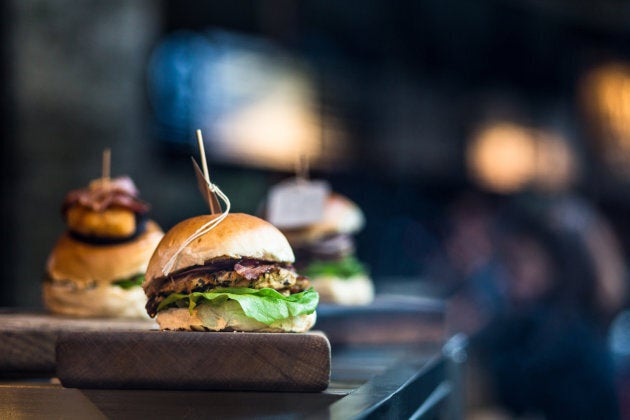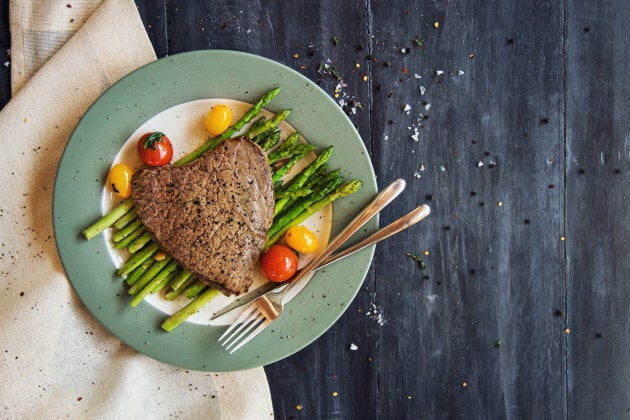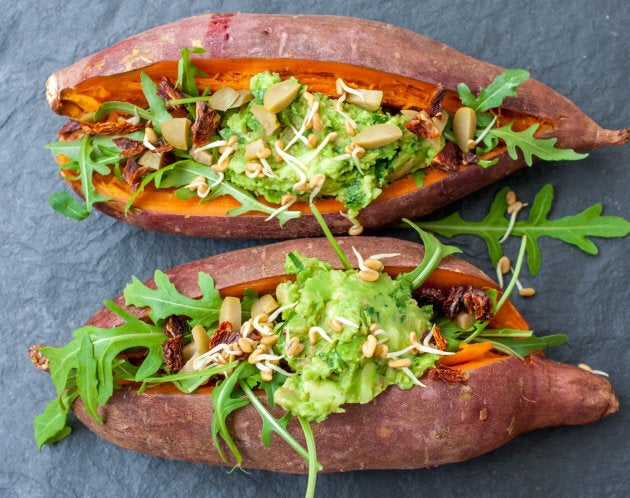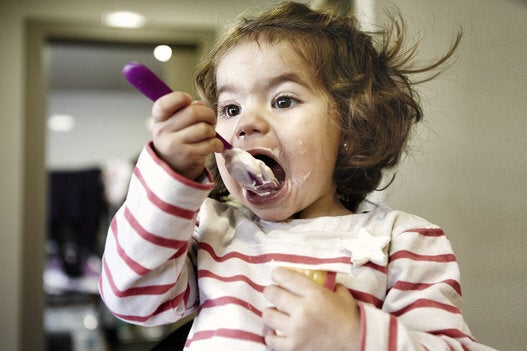
Sustainable health change occurs not by finding a "perfect" diet — finding is fairly passive — but rather through creating an individualized health "mix." Creating is active, and health is an active process. To create an individualized health mix, you have to learn about the various nutrition options available and parse out the nutritional guidelines that will work for YOU.
My personal mix is built upon being aware of what I put in my body, as well as pillars "stolen" from a variety of sources. I limit snacking and aim for a substantial gap between dinner and breakfast — thanks, intermittent fasting.
I eat almost exclusively from the "outside of the grocery store" — meaning fresh fruits and vegetables, lean proteins, and good-quality fats — thanks, Paleo, and habits formed while being vegetarian. Plus, I eat what I love in moderation. I call this my "love it rule" — thanks, Weight Watchers for the balanced approach. I use what works for me and ignore what doesn't.

Curious what your "mix" is? Earlier, I covered the pros and cons of high-protein diets. Then, I examined the vegetarian versus vegan versus high-protein debate. I've also tackled "low-fat" diets, the Mediterranean diet, and Weight Watchers. Today a smorgasbord of smaller analyses (I only have so much space and the material for analysis is endless): the ketogenic diet, Paleo, intermittent fasting, and meal delivery services.
Ketogenic diet
The ketogenic diet advocates extremely low-carbohydrate (10-15 grams daily) and high-fat (75 per cent of diet) consumption. The goal is to put your body into ketosis so that it uses ketones as energy. The rationale is that the diet gives you the benefits of fasting — such as fat loss — without actually having to fast. I know I am supposed to be "Switzerland," but full disclosure: I would die consuming only 15 grams of carbs per day. That is the equivalent of a handful of carrots.
Paleo
The Paleo diet, based around eating foods early humans would have consumed, also advocates fewer carbohydrates than the current typical North American consumes, but allows relatively more carbohydrates than a ketogenic diet. Paleo encourages the consumption of heathy fat, but relatively less than on a ketogenic diet. You are not allowed carbohydrates from grains, beans, and legumes. Carbohydrates from fruits and vegetables are encouraged.

Comparison
The following sample meals illustrate the differences between the two approaches.
Ketogenic meal: small portion of animal protein and butter, small amount of green beans and butter, and a full avocado.
Paleo meal: decent-size portion of animal protein, green beans, half an avocado, and some sweet potato.
Positives
-Protein and fat both aid satiation. Thus, lowering carbohydrate intake and increasing fat and protein intake can positively affect consumption levels. (There is more info on higher-protein diets in one of my previous posts.)
-Both advocate eliminating processed foods and only consuming whole, nutritionally dense foods — a huge pro.
-Typically, Paleo diets are high in fibre (thanks to fruits and vegetables) and omega 3s (thanks to nuts, seeds, and high-quality fish). (More info on fats including omega 3s can be found here and here).

Negatives
-A lack of nutritional balance, especially with the ketogenic diet.
-The ketogenic diet is very restrictive — a bad thing if you crave freedom and balance. You are not allowed most dairy, except high-fat items like butter and certain cheeses; fruit; grains; beans and legumes; starchy vegetables and slightly sweet vegetables like winter squash, beets, or carrots; and processed foods.
-Many individuals do not exist at their best living on extremely low-carb diets. A low-carbohydrate diet — depending on a person's activity level, genetics, goals etc. — can negatively impact hormones, performance, muscle mass and energy levels.
Who might benefit?
-Individuals who genetically metabolize fats and proteins or who, relatively speaking, have trouble metabolizing carbohydrates.
-Individuals whose "linchpin" habit (see here) is excess carbohydrates. Limiting carbs, especially short term, can be a positive mental "reset" to teach the brain it CAN survive without those three pieces of bread. That said, for most, the ketogenic "ask" of 10-15 grams is not sustainable.
-Anyone who thrives on strict "non-negotiable" rules.
Many individuals do not exist at their best living on extremely low-carb diets.
Who might want to steer clear?
-Most people, but specifically anyone whose body can't metabolize fats or who craves freedom, variety, and balance.
Note: if you try higher-protein and/or lower-carbohydrate diets, prioritize water. Your kidneys need water to support ketosis.
Intermittent fasting
Intermittent fasting is another eating plan with the goal, in part, of bringing the body into a ketogenic state. It advocates pushing space between meals up to 16 hours.
For some, spacing out meals, and thus not snacking, makes abstaining from food between meals a "non-negotiable" — helpful if you are a person who mindlessly grazes.
That same positive can be a negative if you overeat after long stretches of not eating (me, if I go more than six hours) or if you have blood sugar irregularities (such as diabetes) and have been instructed to eat at regular intervals.
Another positive: the elimination of late-night snacking. If you commit to 10 or more hours between dinner and breakfast you can't snack while watching TV, etc. — which for many is a huge health problem.
Food delivery services
Delivery services can be a great "stop gap" — a way to learn what a balanced day of eating looks like and to get the "ball rolling." Starting the health train is often the hardest part. The trick is to then use the "little win" of the service to propel you forward and to take the time to set yourself up for success. Create a plan for after the service is done. Also, not all services are created equal — they range from Jenny Craig, which primarily relies on packaged, sodium-filled foods, to more locally owned services using fresh food.
Whatever you decide your "mix" is, always have a both a plan and an "end goal." Use the GPS analogy: if you deviate from your plan, figure out how to get back on track. "Reroute." Instead of saying "screw it," reach your final "healthy eating" destination another way.
Also on HuffPost:
